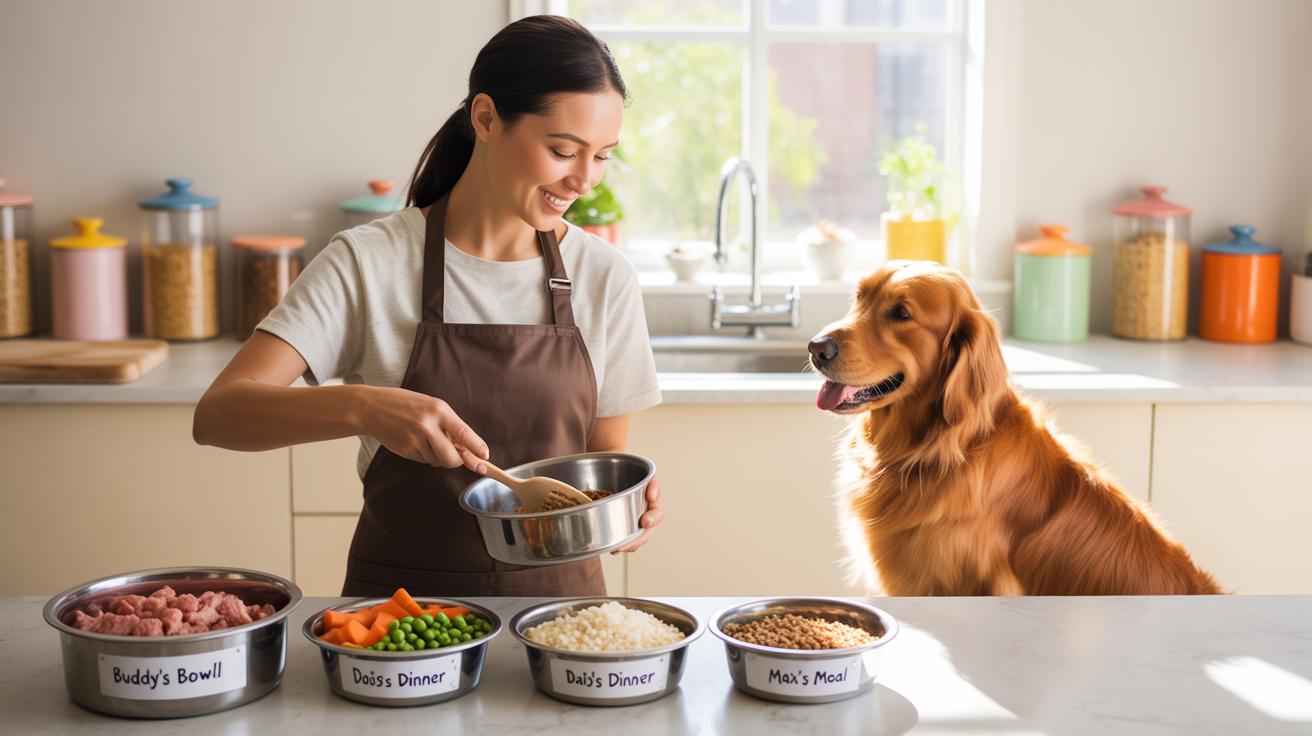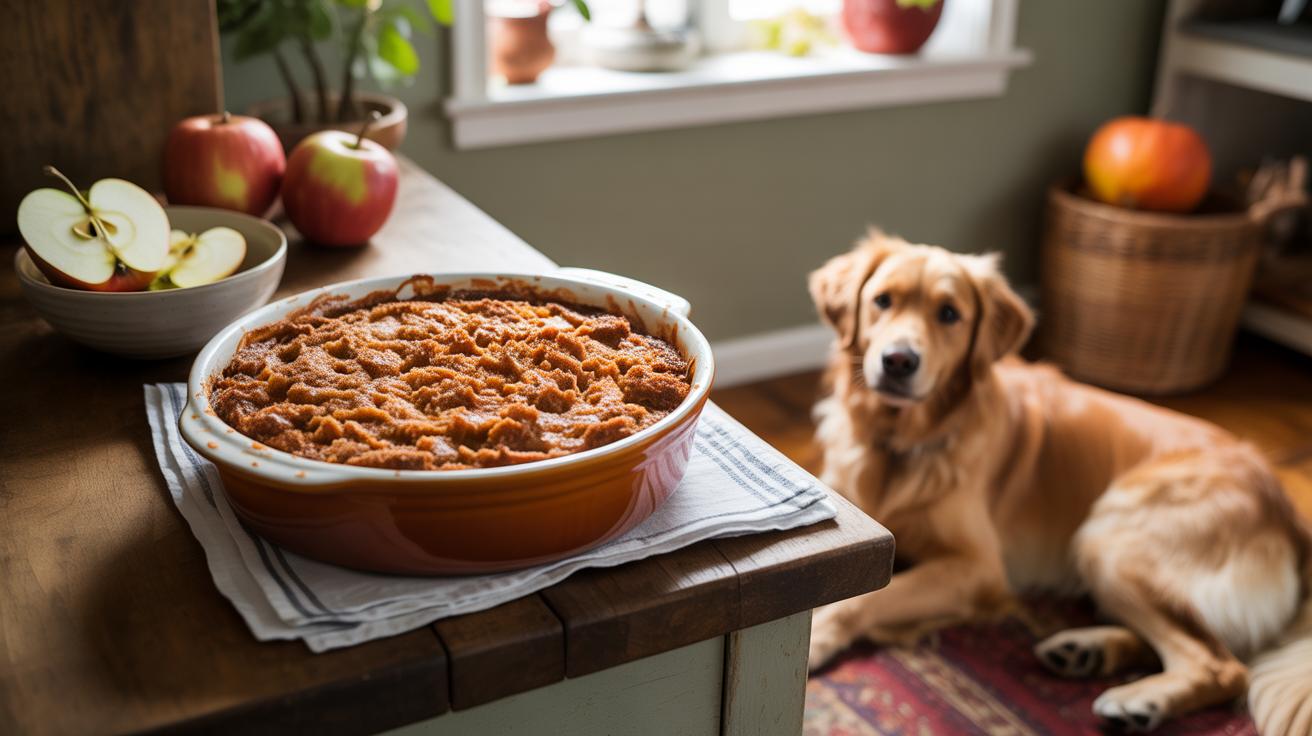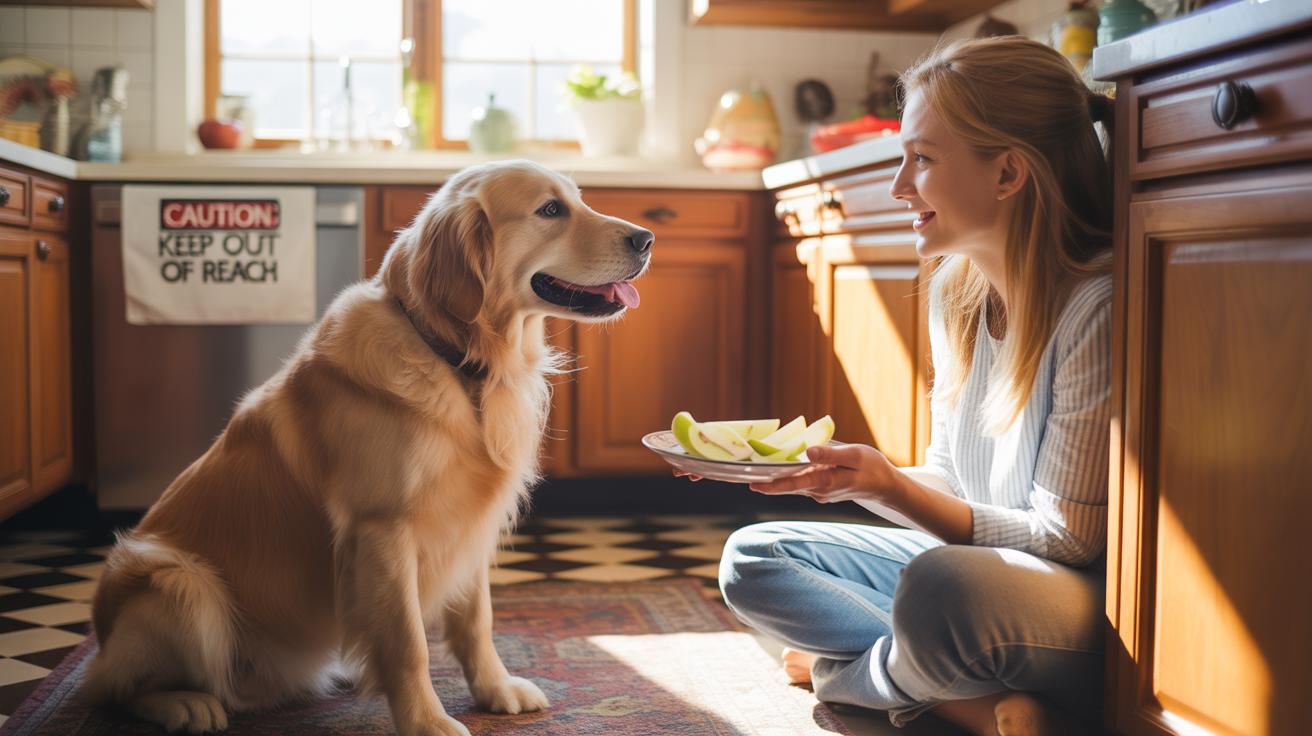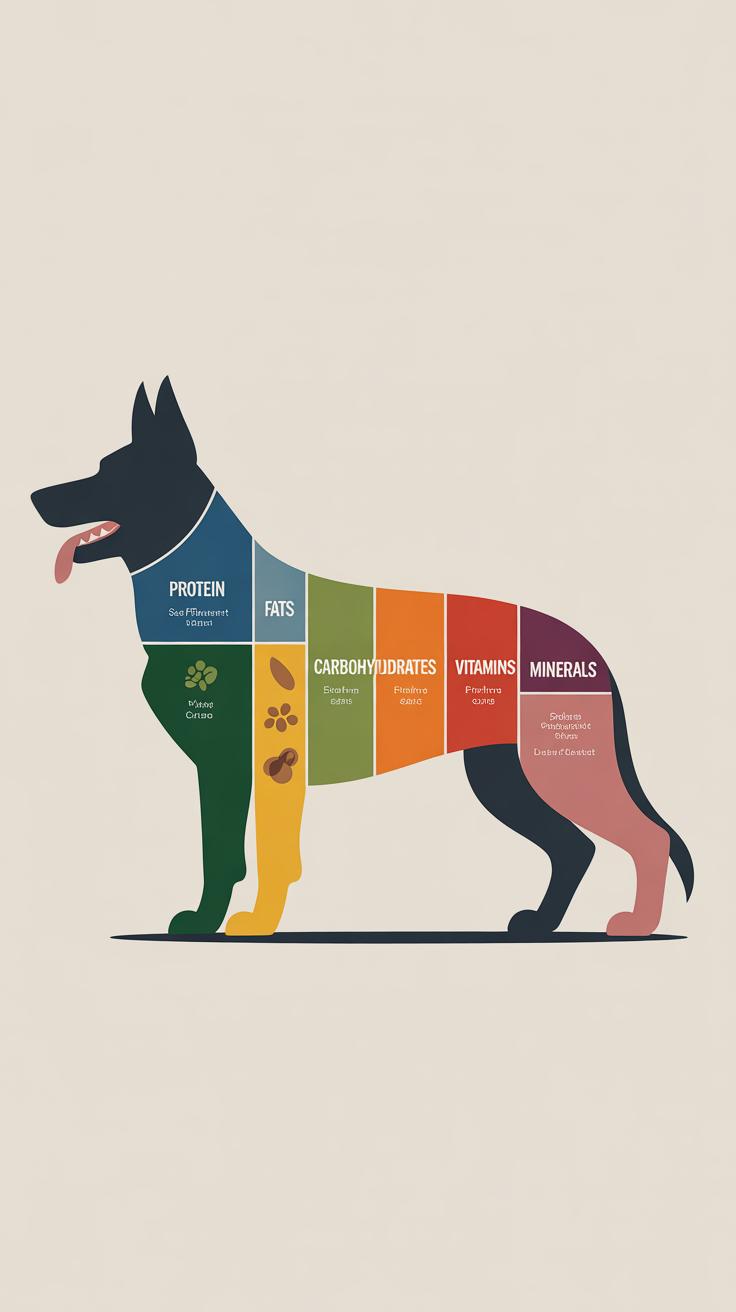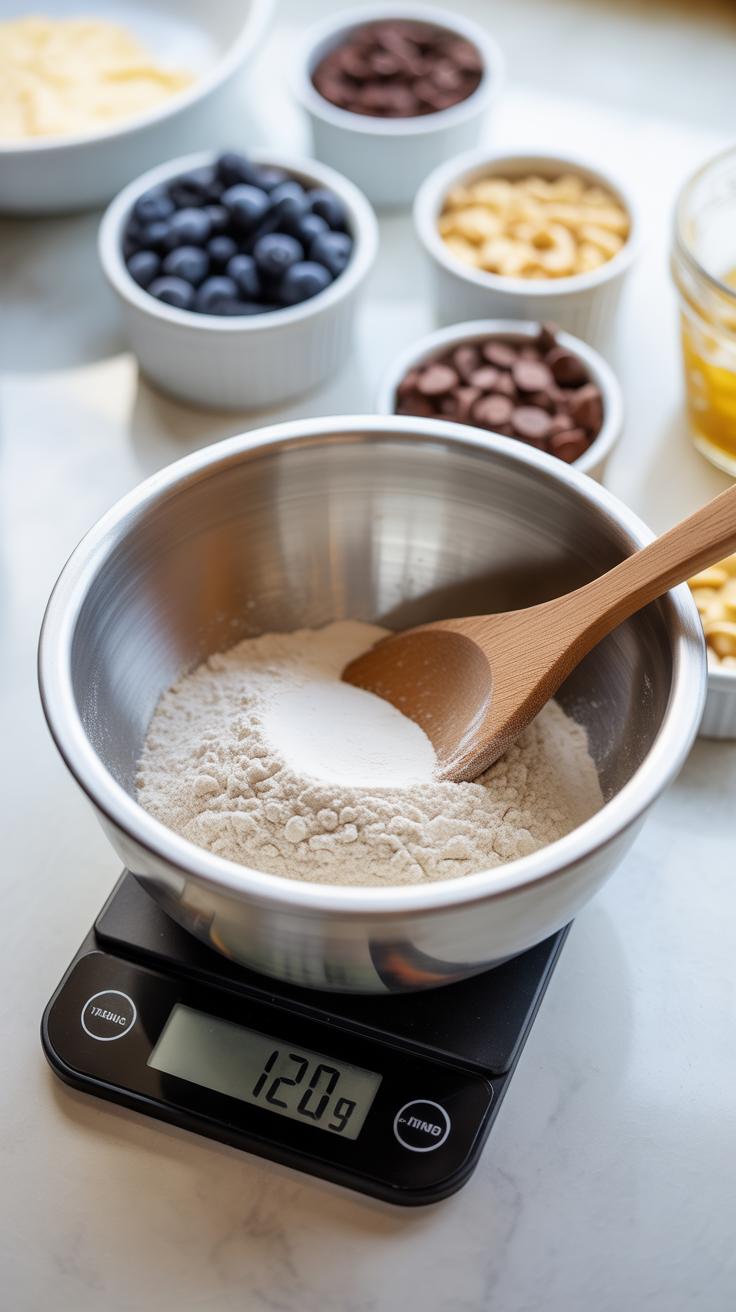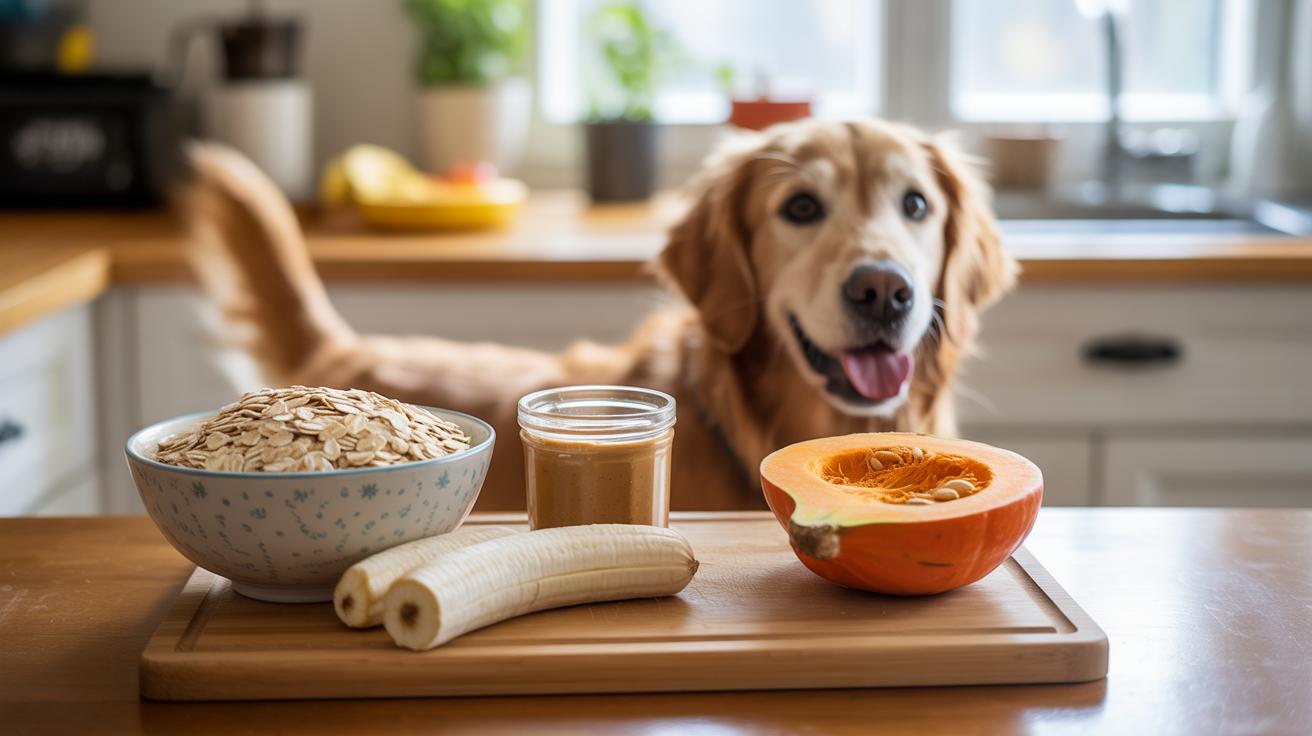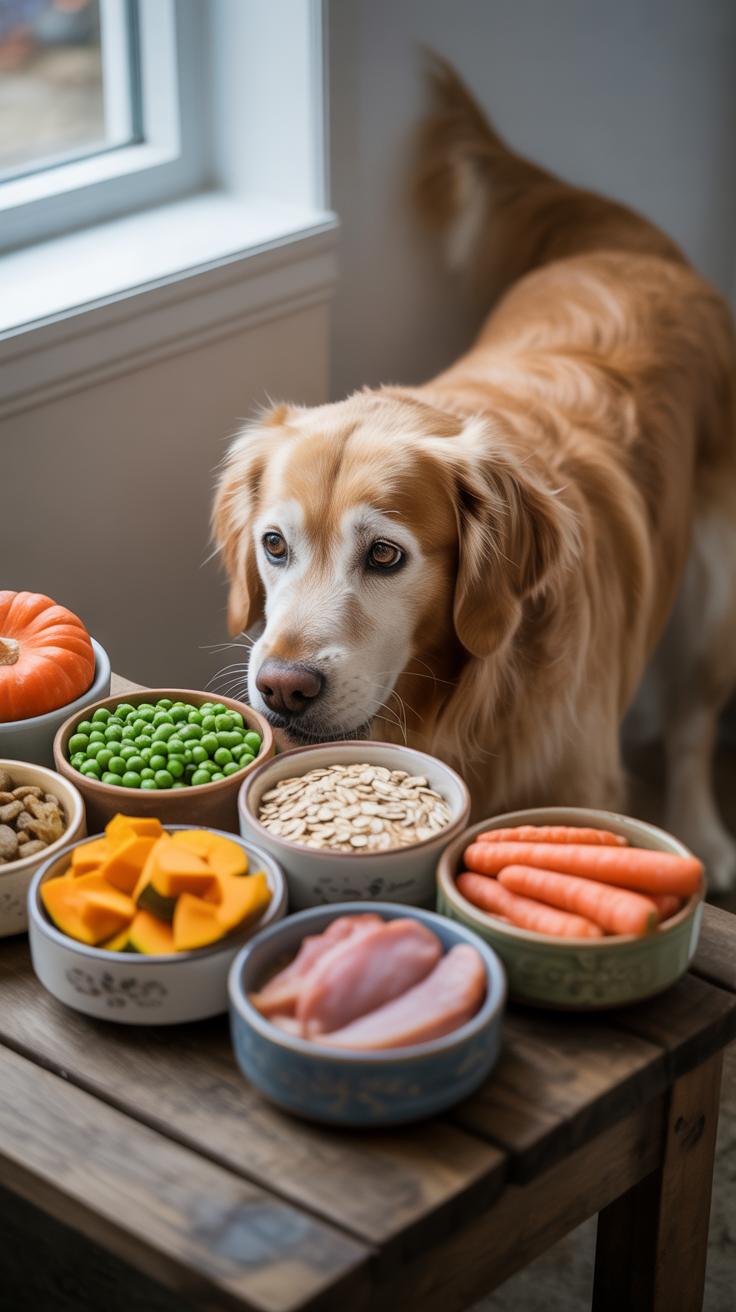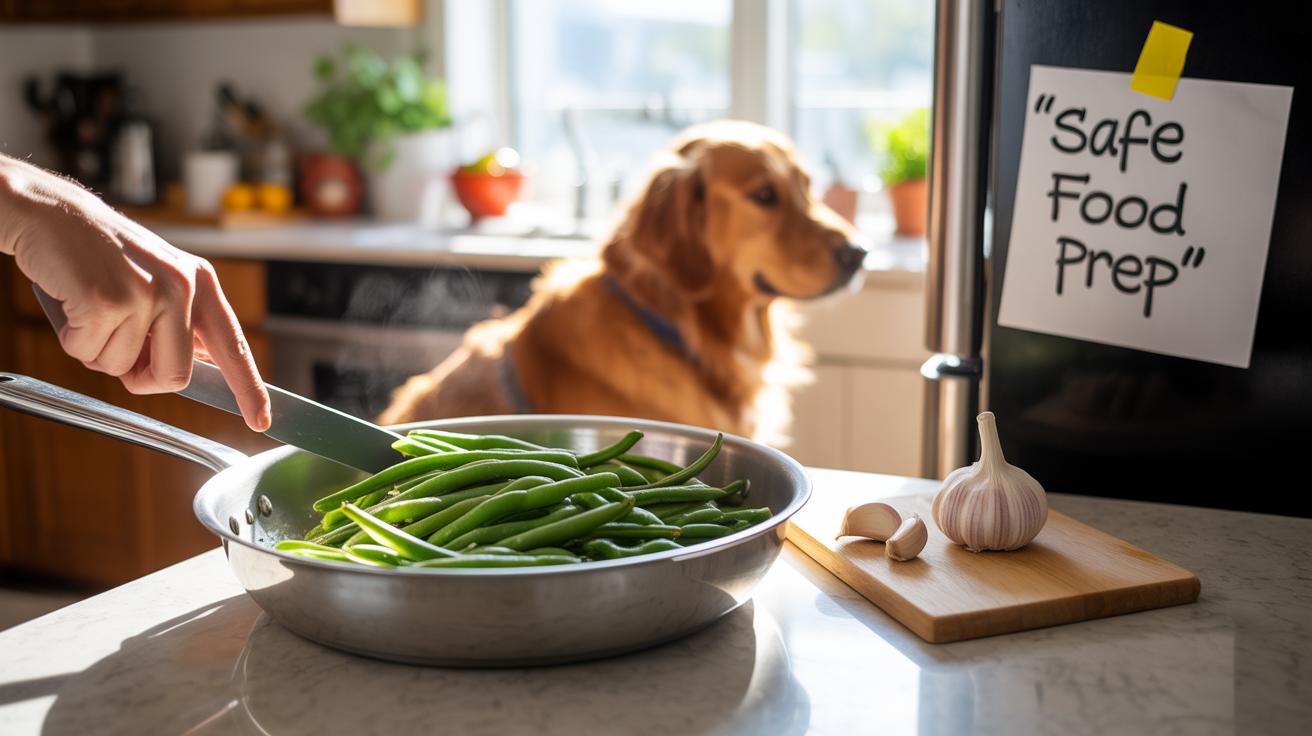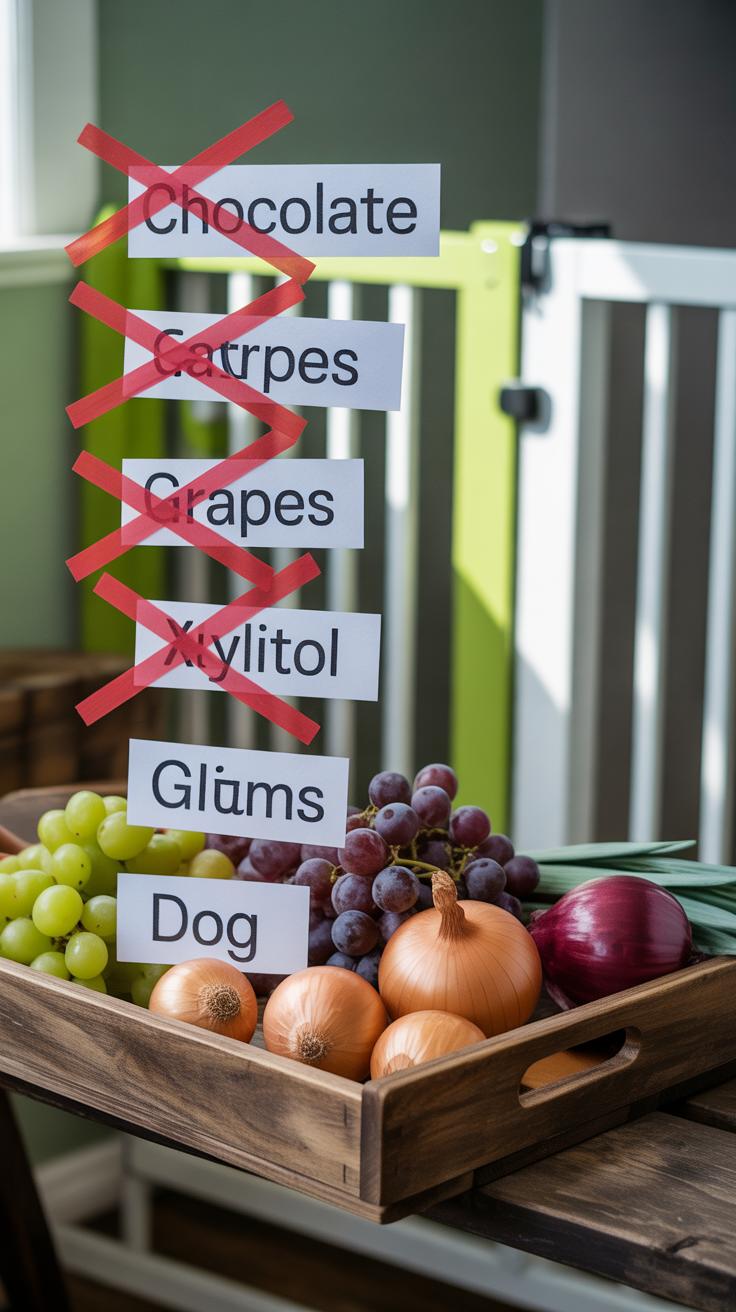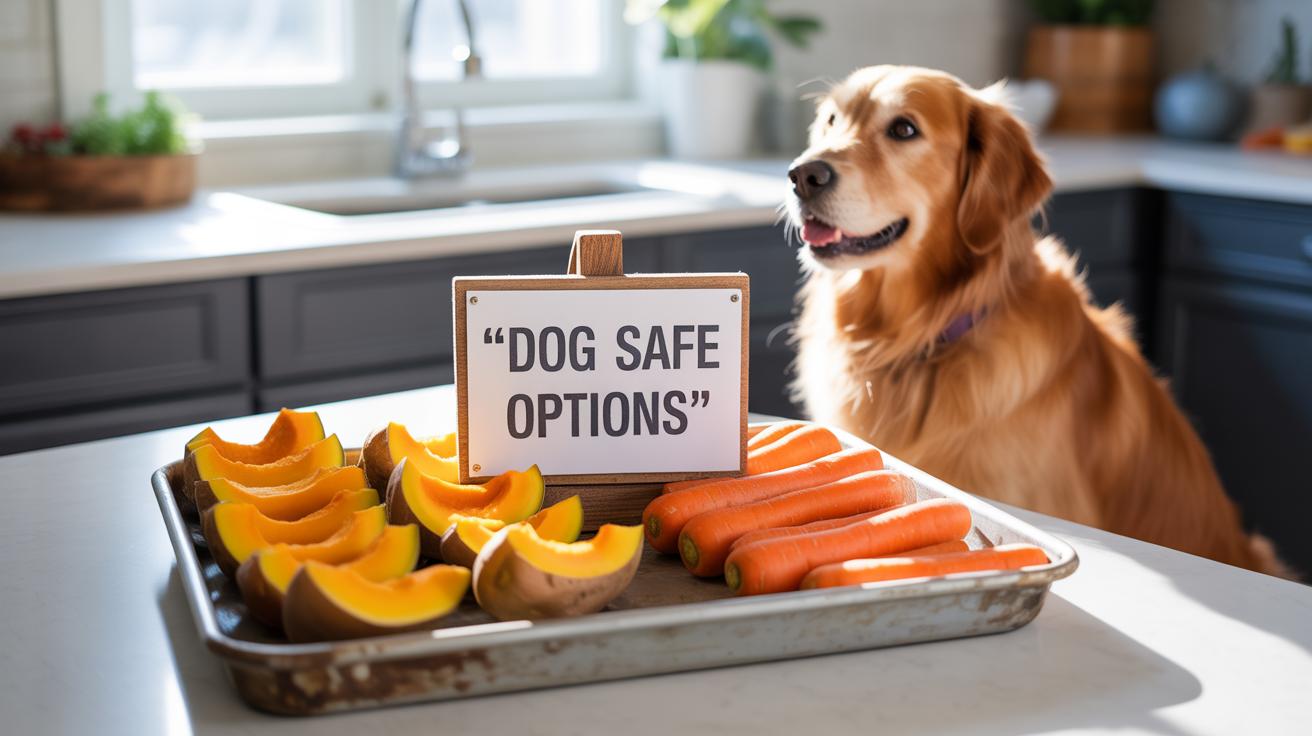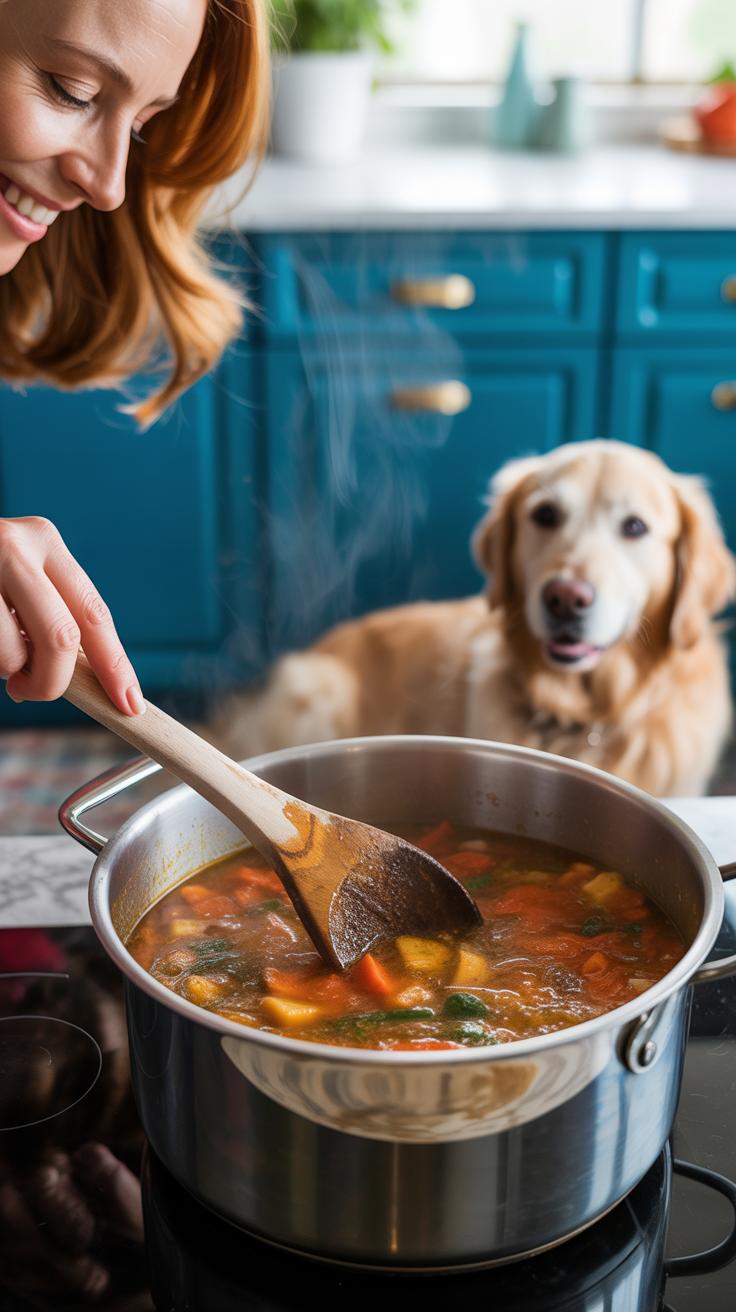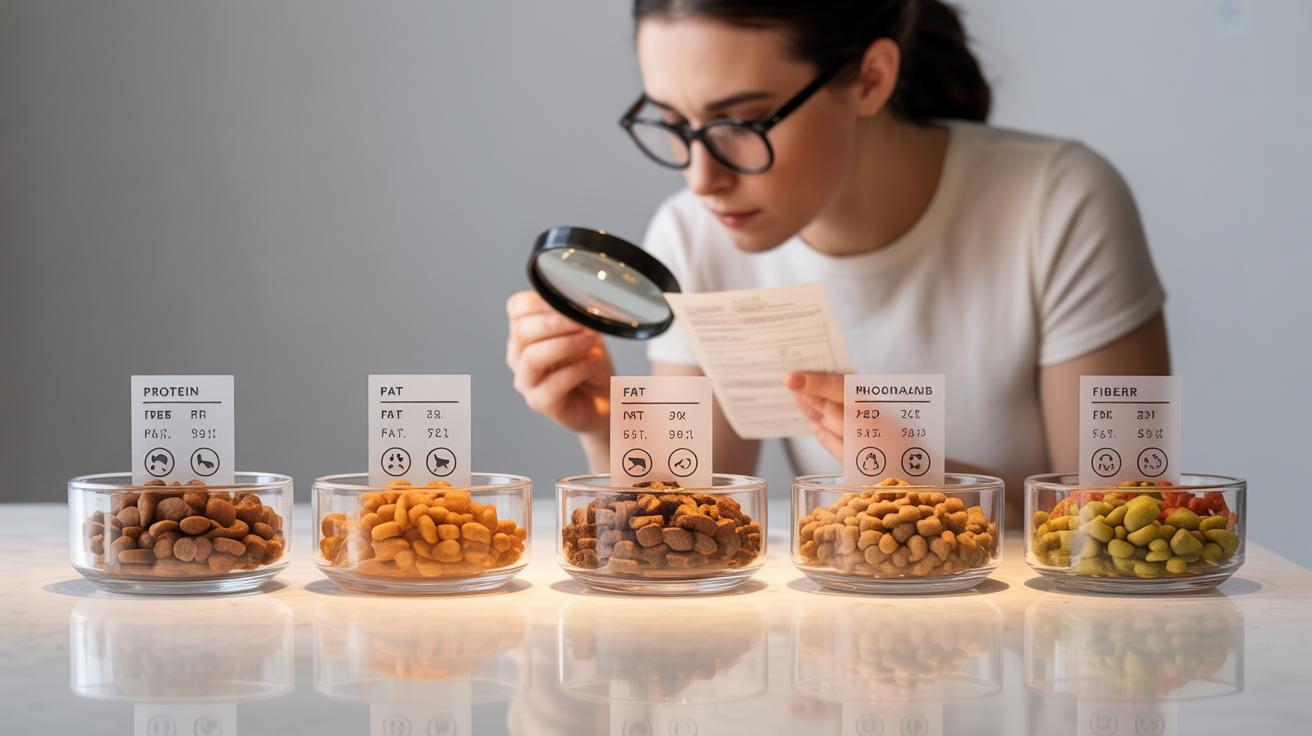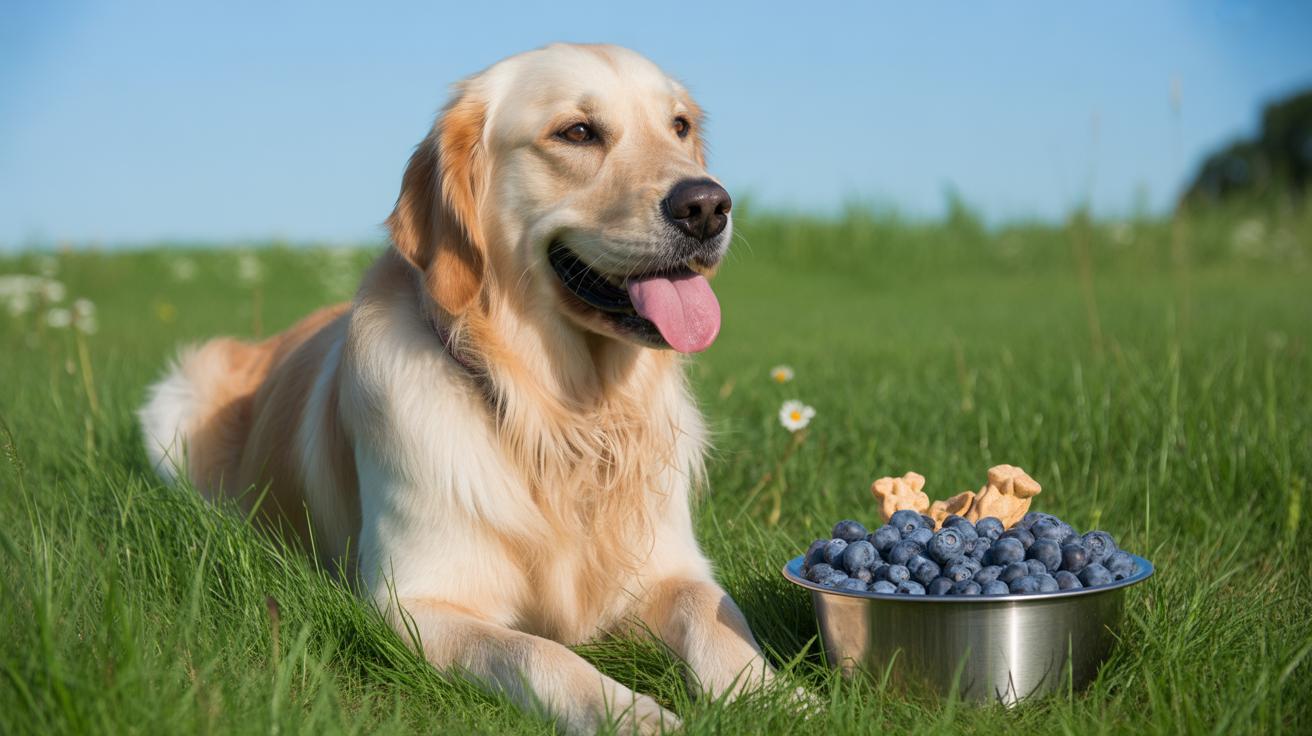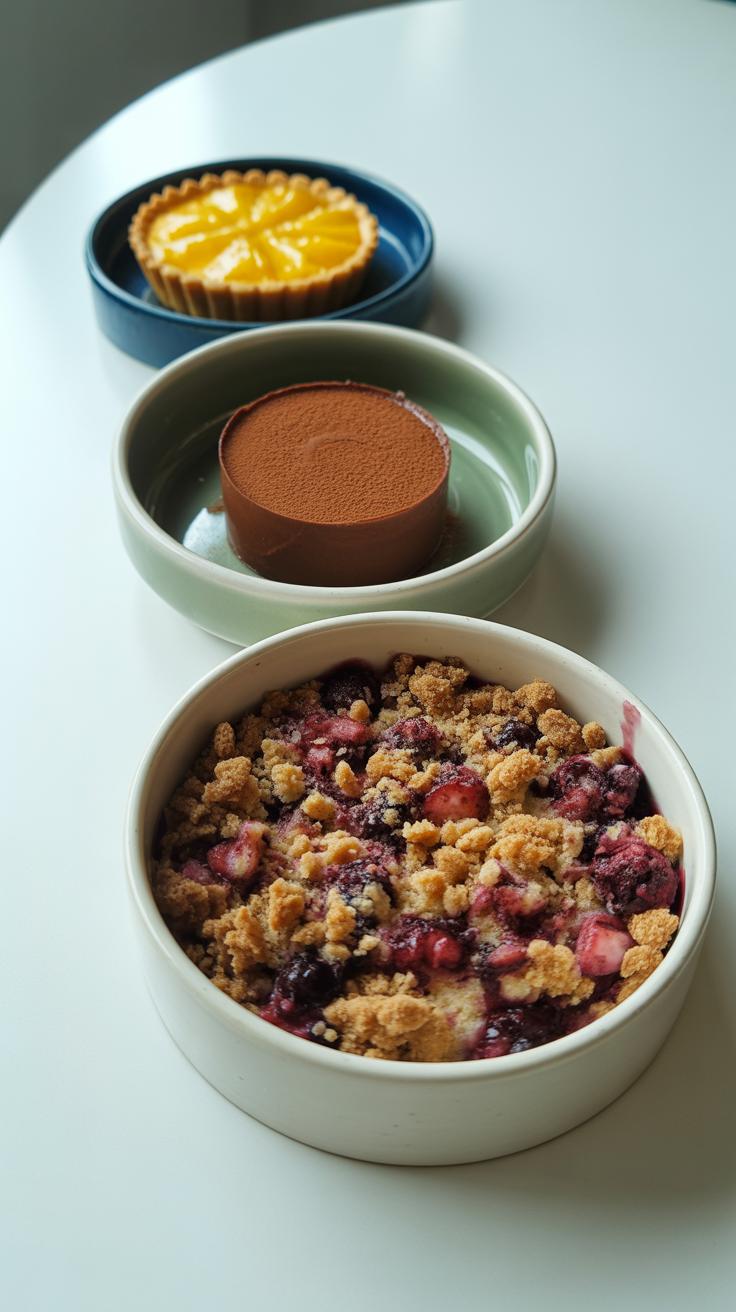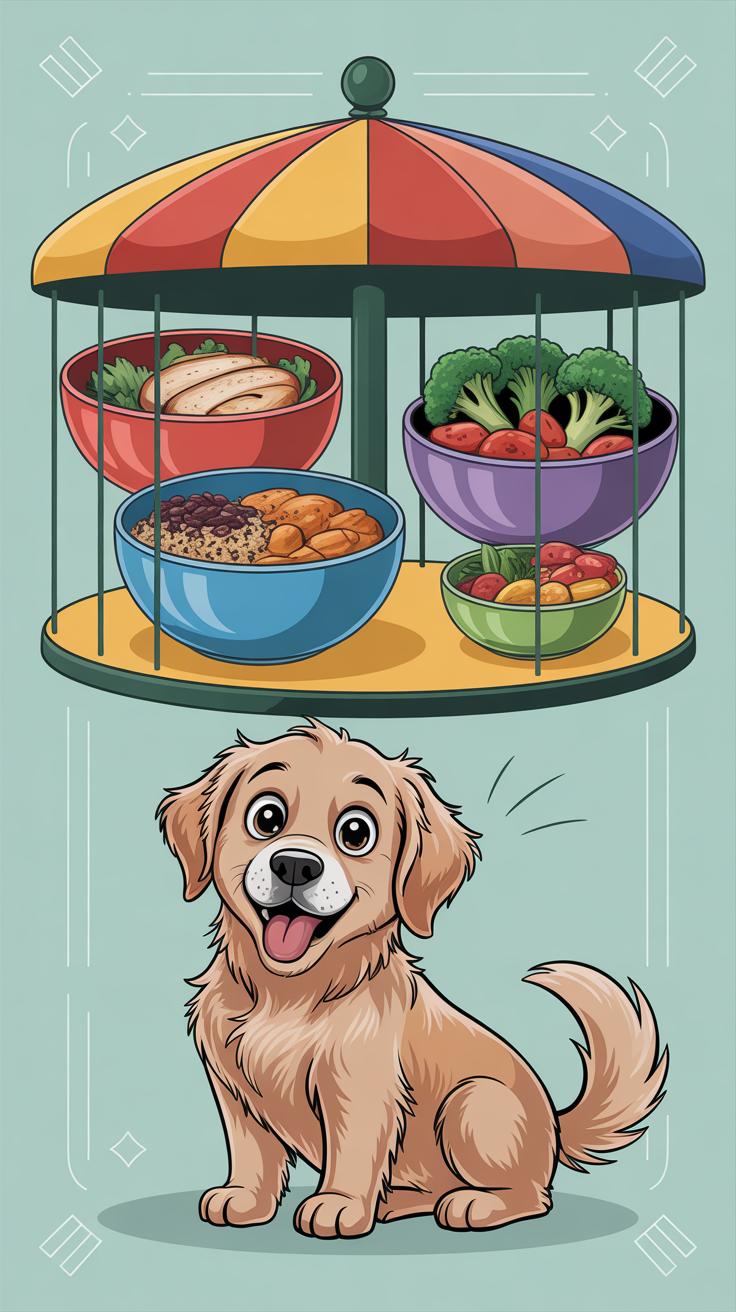Introduction
Making homemade dog food can be a good choice for pet owners who want to control the ingredients in their dog’s meals. It allows you to prepare fresh, wholesome food tailored to your dog’s specific needs. However, it is important to understand what a balanced diet means for dogs to keep them healthy and happy.
This article explores the basics of dog nutrition, the benefits of homemade dog food, and practical steps to create balanced recipes. Whether you are new to this or want to improve your current dog food-making routine, you will find useful advice and clear instructions to get started.
Why Choose Homemade Dog Food
Many dog owners find themselves drawn to homemade food because it feels more natural and transparent. When you prepare meals at home, you know exactly what’s going into your dog’s bowl—no hidden ingredients or vague labels. Some commercial options contain fillers like corn or wheat, which don’t offer much nutrition and can upset sensitive stomachs. Others might include preservatives or additives that some dogs don’t tolerate well.
Besides that, freshness is another reason. Homemade meals are usually cooked or assembled shortly before serving, so nutrients aren’t lost over time like they can be in processed kibble or canned food. This can mean better flavors and textures too, which some picky eaters appreciate.
Some owners notice fewer allergies, better coat shine, or even more energy after switching to homemade food. Of course, it isn’t a perfect fit for everyone; it takes time and effort. Still, for those willing to commit, it often feels worth it to have more control over what their dogs consume and how they thrive.
Health Benefits of Homemade Dog Food
Feeding your dog homemade food can lead to clearer digestion. Dogs with sensitive stomachs or food allergies often show improvements when you eliminate common irritants found in commercial foods. For example, some dogs react poorly to artificial dyes or certain grains, which you can easily avoid at home.
Freshly cooked meals usually hold more vitamins and minerals, since processing and long storage reduce nutrient content in packaged foods. My friend’s Labrador, who struggled with itchy skin and dull fur, showed real improvement after switching to simple, balanced homemade meals focused on lean proteins and vegetables.
Of course, the key is balance—just making food at home doesn’t automatically mean healthier. But when done well, these meals can provide your dog with real, fresh nutrients that support their overall well-being, helping with things like energy levels, digestion, and even mood.
Control Over Ingredients and Quality
One of the biggest advantages of homemade dog food is the clear control it gives you. You can pick quality proteins, choose organic vegetables if you want, and steer clear of fillers or additives you find questionable. This control is often missing in commercial brands, where ingredients might be listed vaguely—“meat meal” or “by-products” can hide a lot.
Some commercial dog foods include preservatives or flavor enhancers that might affect sensitive dogs unpredictably. At home, you decide exactly what goes into each meal. It’s like cooking for a family member—you want good, safe ingredients. This can reduce the risk of unexpected allergens or low-quality components creeping into your dog’s diet.
This control also means you can adapt recipes to fit your dog’s unique needs. If your dog needs less fat or more fiber, you can tweak ingredients easily without hunting for a special commercial formula. It makes feeding your dog more personal—and maybe a bit more satisfying too.
Understanding Basic Dog Nutritional Needs
When feeding your dog homemade meals, knowing what nutrients they need is key. Dogs require a mix of protein, fats, carbohydrates, vitamins, and minerals to stay healthy. These nutrients each have a role that might surprise you.
Proteins and Their Importance
Proteins are the building blocks for your dog’s muscles, tissues, and even their immune system. Without enough protein, dogs can lose muscle mass or feel tired more quickly. The kind of protein matters too—lean meats like chicken, turkey, and beef are excellent sources. Fish and eggs also supply good protein and offer some variety, which your dog might enjoy. Sometimes, I find it tricky to balance protein sources, but mixing them seems to work well overall.
Fats, Carbohydrates, and More
Fats aren’t just about weight gain; they provide a concentrated energy source and supply essential fatty acids crucial for skin and coat health. Fish oils and flaxseed are good additions for these. Carbohydrates offer steady energy and help with digestion, coming mainly from grains or vegetables like sweet potatoes and carrots. Dogs don’t need a ton, but they do benefit from some. Vitamins and minerals, while needed in smaller amounts, support everything from bone strength to immune function. You can get them naturally from a varied diet, although sometimes you might add supplements if your dog needs extra.
Putting this together feels a bit overwhelming sometimes—there’s no single perfect formula. But thinking about these nutrients helps you understand why homemade dog food can be so satisfying and healthful.
How to Balance a Homemade Dog Food Recipe
Creating a balanced homemade dog food recipe means careful mixing of protein, fats, carbohydrates, and supplements. It’s not just throwing together whatever you have in the fridge. For your dog’s health, the goal is to hit the right nutrient ratios—sounds simple but can get tricky fast.
Start with protein as the main ingredient; dogs need about 40-50% of their meal from protein sources like chicken, beef, or fish. Then, add fats—roughly 10-15%—which are crucial for energy and coat health. Carbohydrates fill in the rest, around 30-50%, usually through grains or vegetables. If you skip carbs entirely, dogs can survive, but including some helps with fiber and energy variety.
To calculate these ratios, imagine a plate divided into three—protein taking nearly half, carbs around a third, and fats the smallest portion. For example, 50% cooked chicken, 35% sweet potatoes, and 15% fish oil or chicken fat could work well. But it depends on your dog’s age, breed, and activity.
Supplements give homemade diets a boost. Calcium is probably the one you’ll need to add most often—it helps bones and teeth. Ground eggshells or bone meal work here. Omega fatty acids from fish oil keep skin and coat healthy and reduce inflammation. You might want to consider vitamin E or a general multivitamin if the diet lacks variety over time.
It feels a bit like balancing a puzzle—skip one part, and the whole meal might not quite serve your pet’s needs. Checking in with your vet or a pet nutritionist helps, especially if you’re new to this. Still, with some patience, you can create meals your dog will love that cover all bases.
Safe Ingredients for Homemade Dog Food
Meats, Fish, and Protein Sources
When choosing protein for your dog’s meals, stick to plain, lean meats like chicken, turkey, and beef. These are usually easy to find and most dogs enjoy them. Fish like salmon and sardines also work well, offering healthy fats and omega-3s. Just make sure to cook all meats thoroughly and remove bones. Raw or undercooked poultry or fish can carry bacteria, so cooking is safer—though I know some owners prefer raw, but let’s keep it simple here.
Organ meats such as liver and kidney can be good, but use them sparingly since too much might cause digestive upset. Also, eggs can be a good protein boost, cooked or raw if you’re comfortable with that risk. Overall, vary proteins so your dog gets different nutrients without getting bored. Do you find your dog prefers one type? Keep that in mind, but keep options open.
Vegetables and Grains That Help
Vegetables like carrots, green beans, and spinach provide fiber and vitamins. Most dogs tolerate them well, either steamed or raw, but raw green beans can be a bit tough to digest. Sweet potatoes and pumpkin add fiber and help with digestion. Not every dog loves veggies, but mixing them with meat usually works.
For grains, brown rice and oatmeal are solid choices. They offer carbohydrates and a bit of fiber without filling your dog up too quickly. Quinoa is an interesting alternative, but some dogs might not tolerate it well at first. Experiment carefully and observe how your dog reacts.
In essence, stick to simple ingredients you can easily get from your local store. It makes meal planning less intimidating and more consistent. You might be surprised how just a few staple items can cover most nutritional bases while keeping your dog happy and healthy.
Avoiding Harmful Foods
You might think that feeding your dog whatever you eat is fine, but some common kitchen items can actually be dangerous—even deadly—for dogs. It’s not just about their size or breed; some foods contain substances dogs simply can’t process. Recognizing these harmful foods and knowing their effects can save you from a frightening trip to the vet.
Common Toxic Foods
Chocolate is probably the most famous offender. It contains theobromine, which dogs metabolize very slowly. Even small amounts can cause vomiting, diarrhea, rapid breathing, and in worse cases, seizures or heart problems. Grapes and raisins are also suspect—with no clear toxin identified, but their ingestion can lead to kidney failure. Then there’s onions and garlic, which contain compounds that damage a dog’s red blood cells, causing weakness or anemia over time. Xylitol, a sugar substitute found in many sugar-free gums and candies, causes insulin spikes leading to hypoglycemia, seizures, and liver failure.
Other sneaky dangers include macadamia nuts, caffeine, alcohol, and raw yeast dough. Even small pieces can cause symptoms ranging from lethargy to serious digestive and neurological issues. I once had a friend whose dog got into a bit of chocolate cake—panicking is natural, but quick action can help.
Safe Alternatives and Precautions
Instead of grapes, blueberries can work well in treats; they’re antioxidants and safe. Avoid onions and garlic entirely; use fresh herbs like parsley or basil for flavor. If a recipe calls for sweetness, small amounts of pure pumpkin or carrot puree offer a dog-friendly option. Always check labels on packaged foods for hidden xylitol or other artificial sweeteners.
Preventing accidental feeding is about vigilance. Store harmful foods out of reach, double-check leftovers before sharing, and teach family members about what your dog can or can’t eat. Sometimes, dogs steal things quickly when no one’s looking—it helps to keep snacks off counters too.
Have you ever wondered if some foods might be “sort of okay” in tiny doses? It’s better not to test that—safer to keep your homemade meals strictly free of dangerous ingredients. Watching for symptoms like vomiting, diarrhea, weakness, or unusual behavior after eating any new food is key to catching problems early.
Preparing and Cooking Homemade Dog Food
When preparing homemade dog food, hygiene can’t be overlooked. You want to keep things clean—from washing your hands thoroughly to sanitizing cutting boards, knives, and surfaces. Raw ingredients, especially meat, often carry bacteria, so handling them carefully is key. I remember once rushing through and later regretted not cleaning the counter properly; better safe than sorry.
Cooking ingredients properly is necessary not only to kill harmful bacteria but also to make some nutrients more accessible to your dog. Some veggies, like carrots or green beans, benefit from gentle steaming or boiling to soften fibers, making them easier to digest. On the other hand, overcooking can leach out water-soluble vitamins, which is something I’ve learned the hard way by seeing less enthusiasm from my pup when meals felt too mushy.
Steaming and boiling stand out as cooking methods that keep most nutrients intact while ensuring safety. Avoid frying or using added oils and seasonings that won’t help your dog’s health. For example, I usually steam brown rice and veggies separately from proteins to keep textures and flavors balanced.
Storing homemade dog food safely is another concern. Portion meals into airtight containers, refrigerate promptly, and use within three days to avoid spoilage. For longer storage, freezing is a good option, but thaw completely before serving and never refreeze leftovers.
Serving sizes depend on your dog’s weight, activity, and age. It might take some trial and error to find the right amount that keeps them satisfied without leftovers piling up.
Am I overthinking this? Maybe a bit. But careful preparation and mindful cooking really do make a difference in the quality of your dog’s meal.
Sample Balanced Dog Food Recipes
Starting with homemade meals for your dog might feel complicated, but simple recipes can be both balanced and tasty. Let’s look at two examples that work well—easy to prepare, nutritious, and straightforward enough for beginners.
Recipe With Chicken and Vegetables
This recipe includes:
- 1 cup cooked chicken (skinless, boneless)
- 1/2 cup cooked brown rice
- 1/4 cup steamed carrots
- 1/4 cup steamed green beans
Chicken is a great source of lean protein, essential for muscle maintenance and energy. Rice provides carbohydrates that fuel your dog’s daily activities, while carrots and green beans add fiber and vitamins that support digestion and immunity. All these ingredients together make a fairly balanced meal.
To prepare, cook the chicken thoroughly and chop it finely. Steam the vegetables until tender but not mushy, keeping some texture. Mix everything with the rice once it’s cooled a bit. I find dogs usually enjoy the simplicity and mild flavors here.
For portions, aim for about 1 cup for a medium-sized dog, adjusting on your pet’s size and activity level. You can split the serving into two meals to keep things fresh.
Beef and Sweet Potato Meal
This option is a bit heartier and includes:
- 1 cup lean ground beef, cooked
- 1/2 cup boiled sweet potato
- 1/4 cup chopped spinach or kale
- 1 teaspoon fish oil (optional)
Beef delivers rich protein, iron, and B vitamins, while sweet potatoes are a source of fiber and slower-burning carbs. Dark leafy greens like spinach add antioxidants and minerals, which aren’t always easy to get from meat alone. Fish oil provides omega-3 fats, great for coat and joint health. Though, you might skip the oil if your dog is sensitive.
Cook the beef thoroughly, drain excess fat, then mix with the mashed sweet potato and steamed greens. Let the food cool before serving. This recipe feels more filling, so smaller portions might work better for less active dogs.
Try giving roughly 3/4 cup per meal for an average dog, balancing with their weight and exercise. You’ll notice the beef’s flavor often excites dogs even more, but watch for any digestion changes when switching proteins.
Monitoring Your Dogs Health On Homemade Food
Once you switch your dog to homemade food, keeping a close eye on their health becomes key. You want to see signs that your dog is actually benefiting from the new diet, not just eating it because it’s there. Some clear hints that your dog is thriving include a shiny, soft coat. If you notice their fur becoming dull or flaky, that might suggest a missing nutrient or imbalance.
Energy levels speak volumes, too. A lively dog ready to play usually means the food is working well. But if your dog seems sluggish or unusually restless, it might signal changes are needed. Digestion is another crucial marker. Regular stools that are firm but not hard, and no unusual smells or discomfort, show your dog is processing meals well.
On the flip side, watch for signs like itching, redness, or excessive licking — possible allergy flags. Digestive issues like vomiting or diarrhea suggest your recipe needs tweaking or a temporary stop. Weight changes—too much or too little—tell a story too. You might need to adjust portion sizes, ingredient ratios, or add supplements. Don’t hesitate to experiment slowly while observing how your dog responds. It’s a bit of trial and error, honestly. But with patience and careful monitoring, you’ll find the right balance together.
When to Consult a Veterinarian
Making your dog’s food at home can feel rewarding, but it’s also easy to miss important nutritional details. This is where your veterinarian becomes key. If your dog starts showing unusual symptoms like lethargy, persistent digestive issues, or changes in coat quality, it’s a good time to seek professional advice. Sometimes, what feels like a minor issue might actually signal a dietary imbalance.
Even if your dog seems fine, talking to a vet before making major diet changes helps avoid mistakes. They can guide you to meet your dog’s unique needs, ensuring you don’t accidentally skip essential nutrients or offer too much of something. I’ve seen cases where owners switched recipes based on guesswork and ended up complicating things more than helping.
Health Checks for Homemade Diets
Regular vet visits are essential when feeding homemade meals. Blood tests and nutritional screenings can reveal deficiencies that aren’t obvious just by looking at your dog. It might feel unnecessary if your dog is playful and alert, but these tests catch subtle problems early.
You should plan on at least one comprehensive checkup annually when feeding homemade food. These visits let your vet adjust recommendations as your dog ages or their activity pattern changes. It’s a chance for you to ask questions about new recipes or supplements, too, helping keep your dog’s diet balanced over time.
Special Needs and Conditions
If your dog has a health condition—like kidney disease, diabetes, or allergies—DIY meals require extra care. Vets help tailor diets to these special needs. For example, a diabetic dog’s food needs precise carbohydrate control, something tricky to manage without guidance.
Ignoring these specifics can worsen health problems or create new ones. I remember an owner who tried managing their arthritic dog’s weight through homemade food but ended up making portions too small, causing weakness. Careful vet input can prevent these pitfalls by customizing nutrient ratios and ingredient choices based on medical history and current condition.
Keeping Your Dogs Diet Varied and Enjoyable
Keeping homemade meals interesting for your dog doesn’t have to be complicated, but it does take a bit of thought. Dogs can get bored with the same flavors just like we do. Switching up proteins—like chicken one day, turkey the next, or even fish now and then—helps keep meals appealing. It’s not just about taste, though; a rotation of ingredients helps cover a wider range of nutrients. Some veggies are higher in fiber, others in vitamins, so mixing things up balances things out.
Think about changing both protein and vegetable sources every week or two, depending on what your dog prefers or tolerates. I’ve noticed my dog perks up noticeably when I add something new to her bowl, like a spoonful of cooked pumpkin or green beans. Sometimes, she’s more excited about a new flavor than a treat.
When it comes to treats and supplements, supply them sparingly. They should support the diet, not overload it. It’s tempting to give your dog extra snacks, but too many treats can mess up the overall balance and calorie count. Supplements like fish oil or probiotics can be useful, but only in small doses—and ideally after some chat with your vet. They aren’t magic fixes, just extras.
Have you noticed your dog’s preferences change? Maybe varying meals could keep mealtime something they really look forward to, not just a routine chore.
Conclusions
Feeding your dog homemade meals involves learning about their nutritional needs and choosing the right ingredients. It is rewarding to offer meals that are fresh and carefully prepared, which can improve your dog’s health. Remember to always provide a balance of proteins, fats, carbohydrates, vitamins, and minerals.
By following simple guidelines and recipes, you can make safe and tasty homemade dog food. Keep observing your dog’s reactions to the food and consult with a vet when needed. Homemade dog food can be a healthy, loving choice for your pet’s diet when done carefully and smartly.

